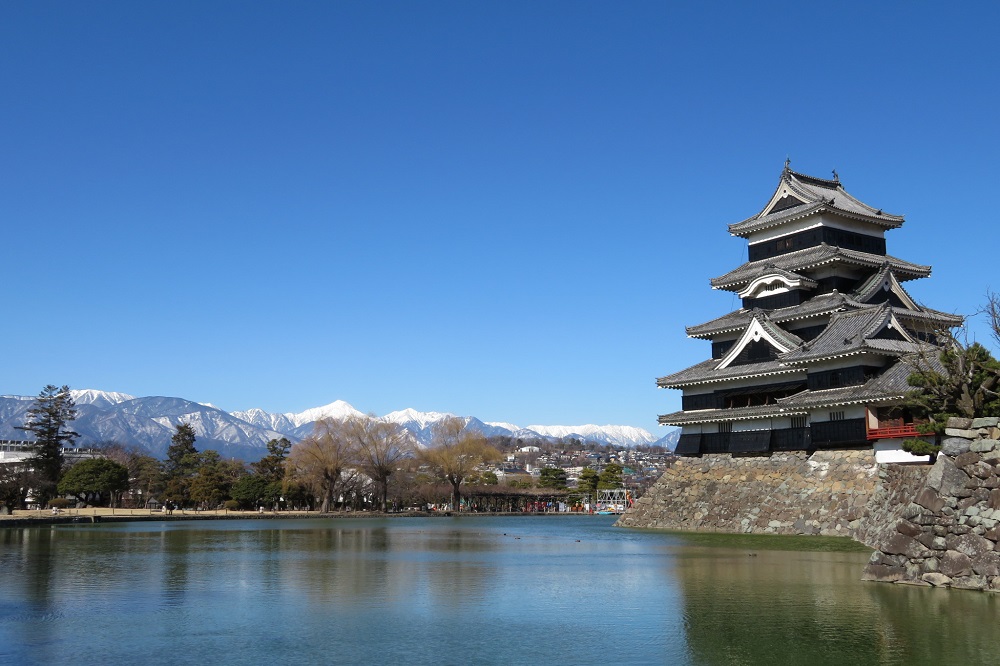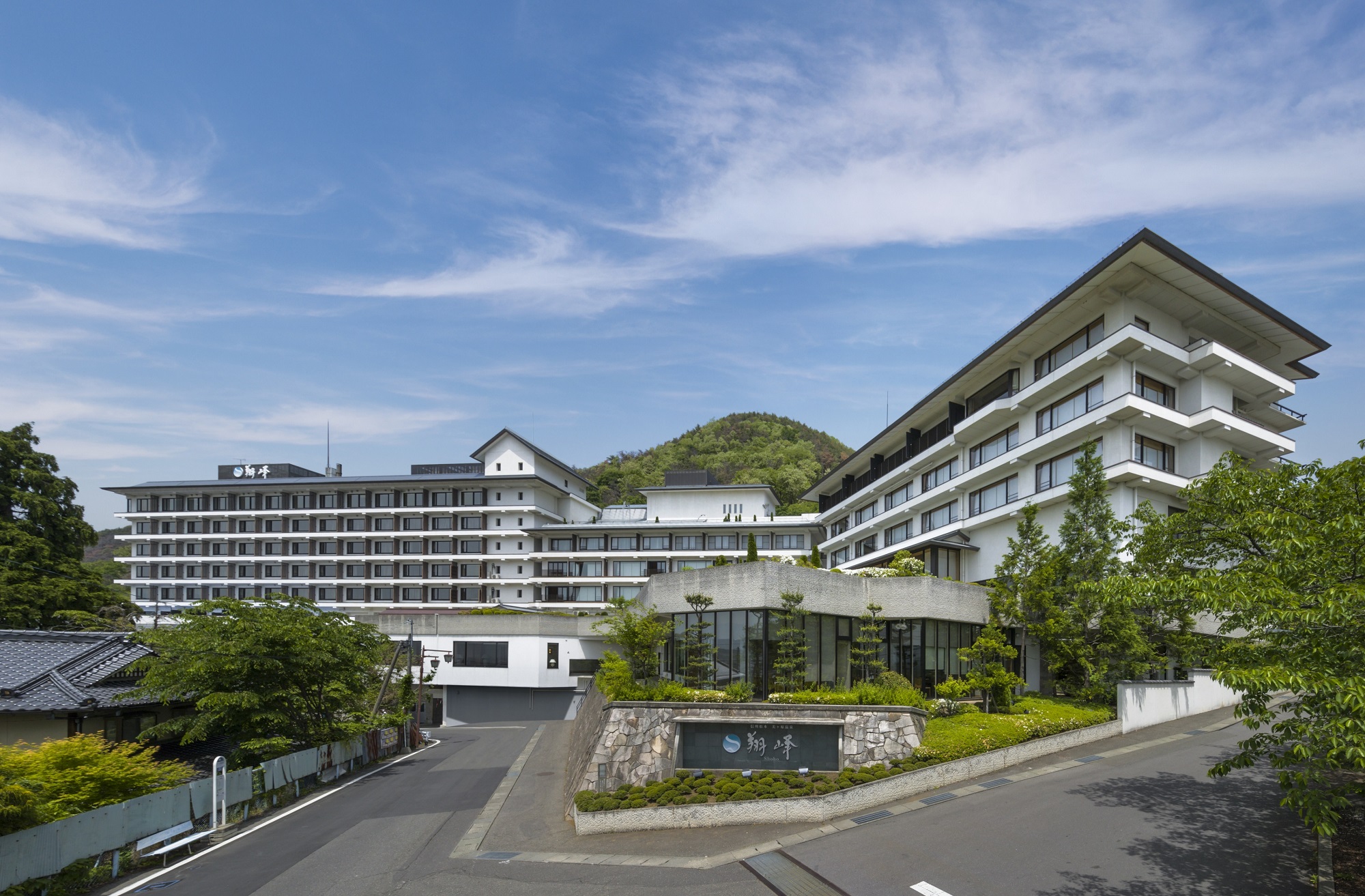Matsumoto Castle / 松本城 (Nagano)
About Matsumoto Castle
Matsumoto Castle is one of the oldest castles in Japan featuring fortified wooden structures built during the Warring States period (1467-1600). The towering castle was constructed in 1594 and is the oldest surviving example of a castle with five external stories and six internal floors today. Currently, Matsumoto Castle and Himeji Castle are the only two castles that are able to visit the castle tower open to the public. Against a backdrop of the majestic Alps, the reflection of the castle tower simmering in the moat, and the stark contrast between the white of the plaster and the black of the lacquered walls creates an exquisite scene unlike any other castle.

Honmaru Goten [Palace] was once both the residence of the castle lord and the place to conduct government affairs. Honmaru Goten [Palace] of Matsumoto Castle was destroyed by fire in 1727, and was never rebuilt but was subsequently relocated to Ninomaru Goten [Palace]. Remnants of the Honmaru Goten [Palace] are still able to be seen in the Honmaru Garden. Honmaru Garden expands past the Kuromon Gate, which is the entrance to Matsumoto Castle, and the area of the former Honmaru Goten [Palace] is partitioned with roof tiles. According to the reconstruction plans of Honmaru Goten [Palace], there were five main buildings with about 60 rooms in the area of approximately 2,730㎡.

The origin of Matsumoto Castle is Fukashi Castle, which was built during the Warring States Period. At around 1590, when Ishikawa Kazumasa was appointed lord and started to improve the castle and the surrounding town, while his son Yasunaga, continued to build the castle tower and palace. Much of the original castle town at the foot of Matsumoto Castle has been preserved, so, visitors may feel as if they were sent back in time when strolling along Nakamachi-dori and Nawate-dori of the castle town. Matsumoto Castle was designated as a historic site in 1930 and a National Treasure in 1936.
Getting there and around
by Train
Approximately 20 minutes of walk from Matsumoto Station
by Bus
Take Matsumoto Tour Bus “Town Sneaker” North Course
Depart from Matsumoto Station Oshiroguchi Bus Stop [No.21 Platform] and disembark at Matsumotojo-Shiyakushomae Bus Stop, approximately 10 minutes ride
Recommendations
Matsumoto Castle
Matsumoto Castle, a National Treasure, consists of five structures of Daitenshu [the main tower], the small Inui [Northwest] Tower, Watari Tower, Tatsumitsuke Tower, and Tsukimi Tower. The walls of the towers have a distinctive finish with white plaster on the upper part and black clapboards covering the lower part. One of the highlights of the castle, is the notable difference in structure with the Main Tower, Watari Tower, and Inui Tower, which were all built in the Warring States Period to protect the territory, and the Tatsumitsuke and Tsukimi Towers, which were built in peaceful times and not equipped for fighting. Matsumoto Castle adopts a connected design, whereby the main tower and Inui Tower are connected by Watari Tower, and the Tatsumitsuke and Tsukimi Towers are joined.

The Legends of Matsumoto Castle
Matsumoto Castle has been revered by people since ancient times, and even have own legends. One of the legends, the "The legend of the secret passages in the Matsumoto Castle", which was on the first floor of the castle tower with a square depression of about 2m in circumference and 1m in depth. This square hole was said to be the entrance to the secret passage connecting the inside and outside of the castle tower. During the massive reconstruction in the Showa Era, the secret passage was investigated, but there was unfortunately no secret passage, just a hole made by the rotted supporting column of the Tenshudai [base of the tower]. There are many other interesting legends about the castle, for one, "The legend of the artisan that elongated the beams", legend telling the construction was suspended due to the supporting beams of roof being short by about 15 cm, but when one of the carpenter tapped the beams with a wooden hammer, the wood stretched by the amount required, and ultimately enabled the construction to be completed without any more incident.

Spring Events
The “Nighttime Cherry Blossom Viewing” and the “Corridor of the Light” - an illuminated row of cherry trees at Matsumoto Castle are held simultaneously at the Matsumoto Castle for a period (eight days for “Nighttime Cherry Blossom Viewing” and ten days for “Corridor of the Light”) starting three days after the declaration of cherry blossom season. The Castle Tower, Honmaru Garden, and the rows of Sakura Cherry Trees along the outer moat of the Matsumoto Castle are illuminated at night in a dazzling light-up display. During these events, Honmaru Garden is open free of charge at night, and visitors enjoy Gagaku [traditional Japanese court music] performance and tea ceremonies while being overwhelmed by the fantastic beauty of the 300 Sakura trees and the Castle Tower, which gives the illusion of floating in the darkness of the night. The rows of cherry trees along the outer moat on the east and north sides of Matsumoto Castle are set aglow, and the beauty of the soft pink Sakura petals falling from the trees, floating on the surface of the water, is exceptionally breathtaking.

Information
https://www.matsumoto-castle.jp/eng/info/guide
English guides are also available.
Unique Local Experiences
Located close to Matsumoto Castle, "Restaurant Taiman" is an eye-catching Western style building with white walls decorated with tangled ivy and seasonal flowers. The furniture and decor of the restaurant are all of Matsumoto folkcraft furniture, creating both a stately and relaxing atmosphere. Be sure to enjoy the authentic French cuisine that has been partaken by many celebrities.

Travel Recommendations
Matsumoto is famous for its soba [buckwheat noodles], and at "Soba Restaurant Motoki Kaichi", located about 10-minute walk from the Matsumoto Castle, to enjoy excellent soba noodles made with only the center part of the buckwheat seed, which is considered to have the best taste. The painstakingly selected seeds, which are procured from contracted farmers, are patiently polished to 30% of their original size over a period of 10 days. These "cream-of-the-crop" soba noodles are beautiful to look at and have the best taste and aroma.
Accommodations
Shoho / 翔峰(Nagano)
527 Satoyamabe, Matsumoto, Nagano
Shoho is a luxurious onsen ryokan [traditional Japanese accommodation facility], located in the highlands of Utsukushigahara Onsen, Nagano Prefecture. The premium hospitality makes guests feel at home, earning praises among many guests wishing to sta....

